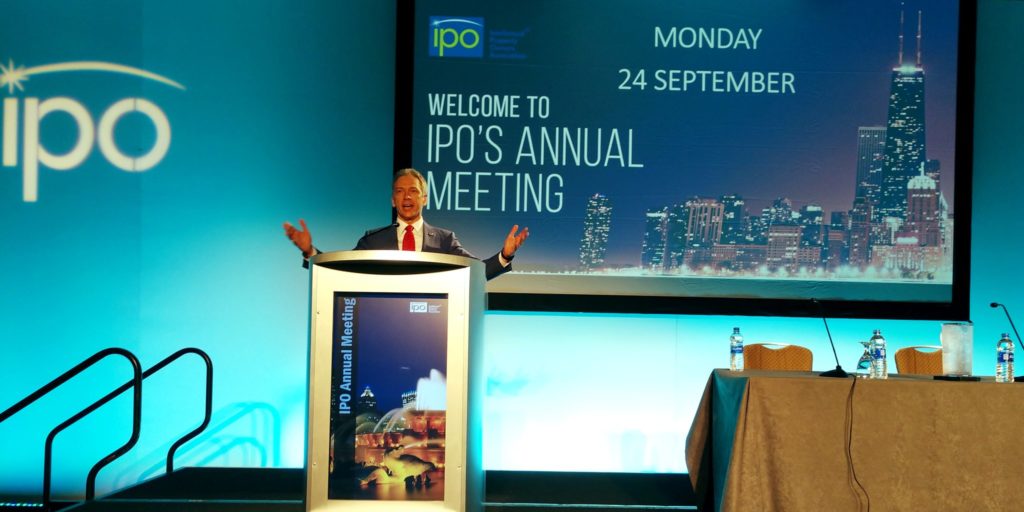18 Oct 2018
During last month’s Intellectual Property Owners Association 46th Annual Meeting, USPTO Director Andrei Iancu announced that the USPTO is considering “revised guidance” for determining what is and isn’t patent-eligible under Section 101 — specifically by identifying clearer categories of “abstract ideas.”
Iancu’s proposal would lead to a major shift in favor of patent applicants, because it would give applicants a clearer and more predictable picture of how to overcome or avoid 101 rejections.
Although the proposal isn’t finalized (and likely won’t be for some time), we’re excited that the USPTO is taking much-needed initiative to clarify the issue! It’s certainly promising news for companies that rely on patent protection for computer-related technologies.
WHAT DOES SECTION 101 SAY?
According to Section 101 of the patent statute, an invention is patent-eligible if it’s a “new and useful process, machine, manufacture, or composition of matter, or any new and useful improvement thereof.”
So the statute, on its face, defines a very broad range of patent-eligible subject matter. But over several decades, the U.S. Supreme Court has created and refined certain judicial “exceptions” to Section 101. In particular, the Court has decided that abstract ideas, laws of nature, and natural phenomena are not patent-eligible.
In recent years, a Supreme Court opinion dealing with one of those exceptions — namely the “abstract idea” exception — has created significant confusion and uncertainty for everyone in the patent world. And this seems to be the exact the problem that Director Iancu is seeking to address.

WHAT IS IANCU PROPOSING?
There are two components to Director Iancu’s recent proposal for dealing with subject matter eligibility:
- Consider patent eligibility separately from the other conditions of patentability
- Establish clear categories of “abstract ideas”
STEP 1: CONSIDER ONLY THE CATEGORIES OF INVENTION
“Section 101 is about subject matter,” Iancu asserts. “It is meant to address categories of matter that are not ever eligible on their own, no matter how inventive or well-claimed they are.”
If a patent’s claims can be fixed through rewriting, then the subject matter was likely always patent-eligible, which means that a 101 rejection isn’t appropriate.
Put another way, an invention based on ineligible subject matter would be patent-ineligible, even if its claims were extremely well-constructed.
So patent examiners “would first look to see if the claims are within the four statutory categories: process, machine, manufacture, or composition of matter.”
This step doesn’t introduce anything new to what the USPTO is currently doing. But Director Iancu’s comments do clarify that the Section 101 analysis shouldn’t look at how novel or inventive the invention is compared to the prior art, since there are two separate statutes that deal specifically with novelty and non-obviousness.
STEP 2: ASSESS “ABSTRACT IDEAS”
Iancu’s proposal is to add a new, second question to the eligibility analysis process: If an invention does fall within one of the four statutory categories, examiners would then check whether it recites one of three different types of “abstract ideas.”
Specifically, an “abstract idea” would be defined using the following three categories:
- Mathematical concepts like mathematical relationships, formulas, and calculations
- Certain methods of organizing human interactions, such as fundamental economic practices commercial and legal interactions; managing relationships or interactions between people; and advertising, marketing, and sales activities
- Mental processes, which are concepts performed in the human mind, such as forming an observation, evaluation, judgment, or opinion.
If the invention doesn’t fall into any of the above three categories, its subject matter would not be considered an “abstract idea” and would be deemed patent-eligible.
But if the invention does fall into one of the three categories, the examiner would have to determine whether its claims are “directed to” the abstract idea.
This part of the analysis essentially asks whether the claims describe a way to practically apply the subject matter. If so, the claim passes 101. If not, the examiner should follow the procedure laid out in the USPTO memo clarifying Berkheimer.
WHY IS IANCU PROPOSING THIS CHANGE?
In the wake of landmark Supreme Court rulings like Alice, patent examiners, patent applicants, and even Federal Circuit judges are growing increasingly uncertain of how to apply Section 101 and what constitutes an “abstract idea.”
As a result, the outcomes for patent applications and court rulings have become at best unpredictable and seemingly arbitrary. An unprecedented number of patent applications have been rejected, without scant logic or rationale, as being directed to abstract ideas.
Although some groups have drafted proposed legislation to clarify Section 101, Congress has yet to move forward with either hearings or legislation — and it’s unclear how long it would take to pass effective legislative action.
“Whether through legislation or otherwise, there is a growing consensus that the issue must be promptly addressed,” Iancu concluded.
HOW COULD IANCU’S PROPOSAL AFFECT THE PATENT PROSECUTION PROCESS?
We’re feeling optimistic about Iancu’s remarks! The proposed guidance looks promising, especially for companies seeking patent protection for software-related inventions.
In its Alice ruling, the Supreme Court did not clearly define “abstract ideas.” As a result, many applicants have been hit by bogus rejections as the patent office has inconsistently interpreted the ruling.
The proposed guidance would streamline the process of determining patent eligibility, making outcomes clearer and more predictable.
That said, bypassing legislative mechanisms does come with risks: It’s possible that the courts might disagree with the USPTO’s interpretation. If that happens, any patents issued under the new guidance could be subject to greater scrutiny.
For one, the courts haven’t explicitly restricted the definition of “abstract ideas” to only the categories Iancu identified.
For another, there’s still no clear guidelines for determining what counts as a “practical application” of an invention.
Nevertheless, there’s general consensus within the patent community that the USPTO’s proactive move to clarify existing patent eligibility case law is a step in the right direction.
The USPTO is currently welcoming public feedback on Iancu’s proposal. We’re certainly looking forward to seeing how the finalized proposal shapes up — we’ll keep you posted!
KEEP TRACK OF THE LATEST CHANGES TO THE U.S. PATENT SYSTEM
Iancu’s proposed revised guidance is just the tip of the iceberg: Between the USPTO, the U.S. Supreme Court, and Congress, we’re seeing new and noteworthy changes to the U.S. patent system on a fairly consistent basis.
To help you keep up with the latest, we’ve put together a handy infographic outlining key developments — as well as their potential impact to your business’s patent strategy. Download it now!
IS IT TIME TO START BUILDING YOUR PATENT PORTFOLIO? WE’LL HELP YOU FIND OUT!
When you’ve got game-changing technology on your hands, you can’t wait to share with the world — which also means protecting it from competitors.
But is now the right time to start moving forward with the patent process? Download our FREE checklist to find out. Learn the following:
- What does a patent really do?
- Does your invention have substance?
- Do you have all the necessary resources lined up?
- Is your business structure — and all the logistics — ironed out?
- How should you proceed if you’re not quite ready to begin the patent process?
Dive deep into the patent process and get all your IP readiness questions answered.
Fill out the short form on this page to download this checklist today!
GET THE FREE CHECKLIST

Michael K. Henry, Ph.D.
Michael K. Henry, Ph.D., is a principal and the firm’s founding member. He specializes in creating comprehensive, growth-oriented IP strategies for early-stage tech companies.

